Beauty News, Wilma
Achille Millefolium – Yarrow – A wonderful ingredient in skincare
Achillea millefolium, commonly known as yarrow, is a perennial herb belonging to the family Asteraceae. It is native to the Northern Hemisphere, particularly in regions of Asia, Europe, and North America. Yarrow is a versatile plant that has been used for centuries for its medicinal, culinary, and ornamental properties.
Description:
Yarrow is a hardy plant that typically grows to a height of 0.3 to 1 meter (1 to 3 feet). Its leaves are feathery, lance-shaped, and arranged alternately on the stem, with a distinctive dark green color.
The plant produces small, clustered flowers, which usually appear from May to October. The flower colors range from white and pink to yellow and red, depending on the variety.
Habitat:
Yarrow can be found in a variety of habitats, including meadows, pastures, roadsides, and disturbed soils. It prefers well-drained soil and can tolerate a range of soil types and pH levels.
The plant is drought-resistant, making it suitable for xeriscaping and low-water gardening.
Medicinal uses:
Achillea millefolium has been used in traditional medicine for its various therapeutic properties, such as:
- Anti-inflammatory:
Yarrow contains flavonoids and sesquiterpene lactones, which possess anti-inflammatory properties. It has been used to alleviate symptoms of conditions like arthritis and muscle pain. - Hemostatic:
Yarrow is known for its ability to stop bleeding, both externally and internally. It has been used to treat nosebleeds, wounds, and heavy menstrual bleeding. - Antimicrobial:
Yarrow has demonstrated antimicrobial activity against several types of bacteria, fungi, and parasites. - Digestive aid:
Yarrow has been used to treat digestive disorders like indigestion, diarrhea, and stomach cramps. - Respiratory relief:
The plant has been used to treat respiratory issues, such as coughs, colds, and bronchitis.
Culinary uses:
Yarrow leaves and flowers can be used as a culinary herb to add flavor to various dishes. They have a slightly bitter taste and are often used in salads, soups, and stews. Yarrow can also be used as a substitute for hops in brewing beer, imparting a unique aroma and flavor.
Ornamental uses:
Due to its attractive foliage and flowers, yarrow is often grown as an ornamental plant in gardens and landscapes. It is valued for its low maintenance requirements, drought tolerance, and ability to attract beneficial insects like butterflies and bees.
Precautions:
While yarrow is generally considered safe for most people, it may cause allergic reactions in individuals with sensitivities to plants in the Asteraceae family.
What are the benefits of this plant for skincare?
Yarrow (Achillea millefolium) has several properties that can be beneficial for skincare. Some of these benefits include:
- Anti-inflammatory:
Yarrow contains anti-inflammatory compounds, such as flavonoids and sesquiterpene lactones, which can help soothe irritated and inflamed skin.
This makes it potentially useful for managing conditions like eczema, psoriasis, and rosacea. - Antimicrobial:
Yarrow exhibits antimicrobial activity against various bacteria, fungi, and parasites. This property can be helpful in treating or preventing skin infections and acne caused by bacteria. - Astringent:
Yarrow has astringent properties, which can help tighten and tone the skin.
This may be beneficial for oily or combination skin types, as it can reduce excess oil and refine the appearance of pores. - Wound healing:
Traditionally, yarrow has been used to promote wound healing due to its hemostatic (blood-clotting) properties. It may help accelerate the healing process of cuts, scrapes, and minor burns when applied topically. - Skin hydration:
Yarrow contains polysaccharides, which can help maintain skin hydration by retaining moisture. This property can benefit those with dry or dehydrated skin. - Antioxidant:
Yarrow contains various antioxidants, including flavonoids and phenolic acids, which can help protect the skin from damage caused by environmental factors like pollution and UV radiation.
To incorporate yarrow into your skincare routine, you can use products that contain yarrow extract, such as creams, lotions, or serums.
Alternatively, you can prepare a yarrow infusion by steeping dried yarrow flowers and leaves in boiling water, then use it as a facial toner or rinse.
As with any new skincare product, it’s essential to do a patch test to check for any allergic reactions or sensitivities before applying it to your entire face or other larger areas of skin. Always use yarrow products as directed and avoid applying them to broken or irritated skin. Pregnant and breastfeeding women should avoid using yarrow, as it may stimulate the uterus and affect hormone levels.
It’s essential to apply sunscreen and practice sun safety measures, such as wearing protective clothing and seeking shade, when using yarrow on your skin. By the way, you should always do this, no matter what ingredient(s) are in a moisturizer.
🙂


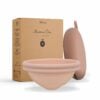
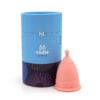













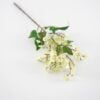


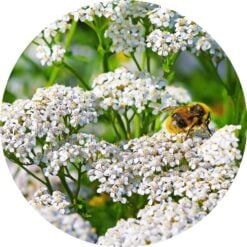












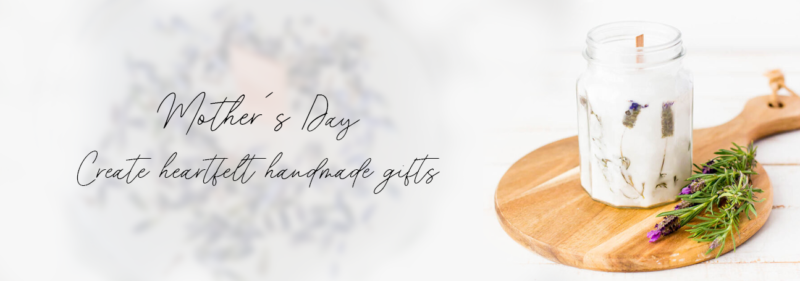
 Beauty Products
Beauty Products By Skintype
By Skintype Brands A-Z
Brands A-Z Wellness
Wellness Health / Nutrition
Health / Nutrition